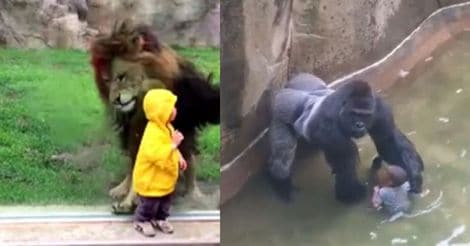Before we could get over the tragic incidents at the Cincinnati and Santiago zoos, another video from a wildlife park has taken the internet by storm. The video, captured at the Chiba Zoological Park in Japan, shows a huge lion charging at a two-year-old toddler with all its might, only to be faceplanted into the glass wall of the enclosure.
The huge cat is seen maintaining an eye contact with the toddler for a few seconds and once the boy turns his back, the ferocious 400 pound animal attempts to pounce on him, without knowing that there was a thick glass barrier between its enclosure and the kid.
Ever since the video was uploaded on Youtube, it has been getting mixed responses from the public and it was a matter of surprise to some that the parents who were reportedly capturing the child's video, continued shooting the clip even after seeing the lion charging at their kid.
“If it were my child and I happen to see the act, the next moment I would be rushing to save my kid and not shoot the incident, whatever safety measures be there,” commented a parent after seeing the video.
According to veterinarians and animal experts, the lion being a carnivore and a natural predator, shows its basic instinct to attack a prey. Just because they are bred in captivity, their instincts don't change.
This incident caught in the limelight after the Cincinnati zoo incident, where a gorilla named Harambe was killed by the zoo authorities to save a three-year-old. The public outrage over the killing of the gorilla had sparked wide debates on the safety of zoos and even on the existence of it. Another incident that shook the public recently was when two African lions were shot dead in order to save a man who climbed into their cage to commit suicide in Santiago zoo, Chile.
True, human life is way too costly than that of an animal's. But these animals also deserve the right to live. These incidents point out to a most important factor- Zoo safety. Accidents at zoo can be avoided with more precision in adopting safety measures. Proper safety designs by architects can be done without loosing the natural environment provided in the enclosures. Also, parents need to understand that though safety measures are adopted in zoos, it is a place for wild animals at captivity, and that animals are not humans. They lack the ability to understand and think.
























